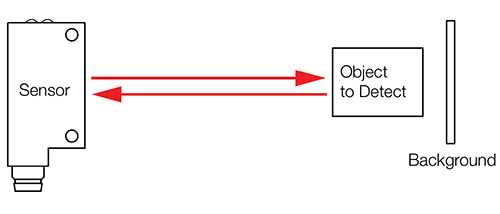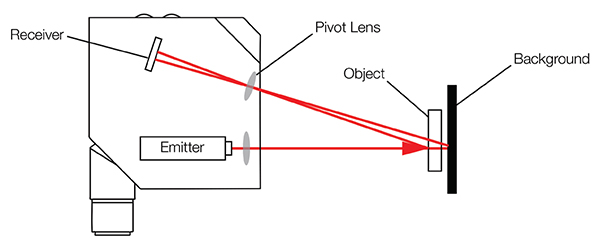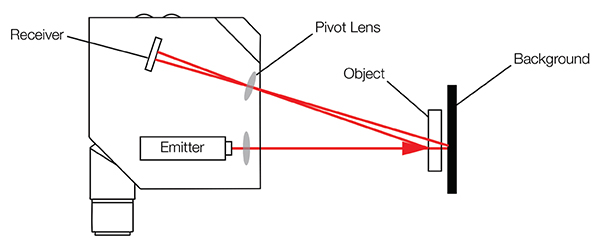In a sample application product presence needs to be verified—objects in a blister pack—before the sealing process occurs. The product and blister pack material can be various colors and textures, and in some cases, they will be close to the same color as the product. A properly specified sensor will therefore have a small, focused light beam—and a visible beam is preferred for ease of setup. Regardless, the product needs to be verified without sensing the package from above, because of machine compactness, making the background suppression sensor the ultimate solution.

Background suppression sensors are becoming more popular because of their ability to ignore backgrounds, thus preventing false triggering. These sensors excel in applications where the background would possibly change: for instance, people walking behind a conveyor in light-colored clothing. Also, they are perfect for error proofing parts to ensure O-rings or other parts are in position.
Background suppression is a variation of the diffuse sensing mode that uses the triangulation principal. When light emitted from the sensor strikes the target, it will be reflected back to the receiver at some angle. The closer the target to the receiver, the greater the angle; likewise, the farther the target is from the sensor, the smaller the angle. Unlike the standard diffuse sensor, which depends on the amount of light reflected back to the receiver, these sensors also depend on the angle of the light striking the sensor to activate the output.
Adjustable background suppression sensors are available either with a mechanical or electronic adjustment, each with their advantages. The sensors use more sophisticated electronics and therefore are more expensive than their standard diffuse mode counterparts. Background suppression sensors also have a shorter sensing range than diffuse sensors.

Even though background suppression sensors may be more expensive and complex, they can provide solutions to complex applications or applications that have pushed diffuse sensors to their limit. These sensors are especially suited for error proofing applications.

Advantages of background suppression sensors include:
• less sensitive to target color
• ignores reflective backgrounds
• detects small objects
• precise and repeatable
• single device to be installed
There are several application considerations that you should keep in mind:
• higher costs than standard diffuse sensors
• typically have a shorter sensing range than standard diffuse sensors
• may have a minimum sensing range (blind spot)
• the light spot should be smaller than the object being detected; if the target is smaller than the light spot, the sensor may detect the background because the light beam passes around the target (this is referred to as the cross-eyed effect)
• if the background is highly reflective, for instance a mirror or reflector, too much light may be returned to the receiver (referred to as the blinding effect; to correct this issue, tilt the sensor approximately 5°
• when using a fixed background suppression sensor (no adjustment for sensing distance), the sensor should be adjusted for the background, and not the object
• it is best if the target moves either toward or perpendicular to the sensor face.
Balluff
www.balluff.com
